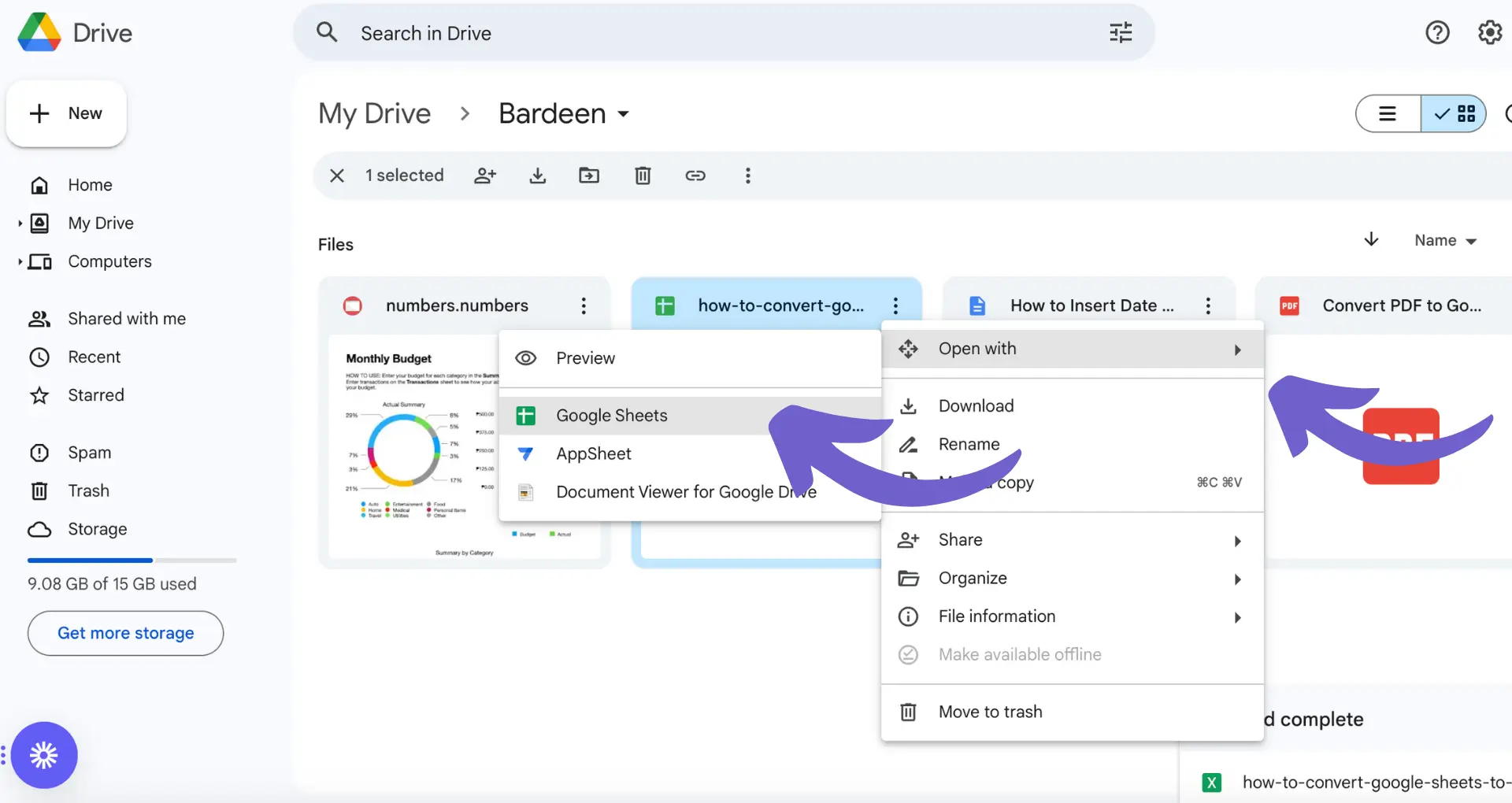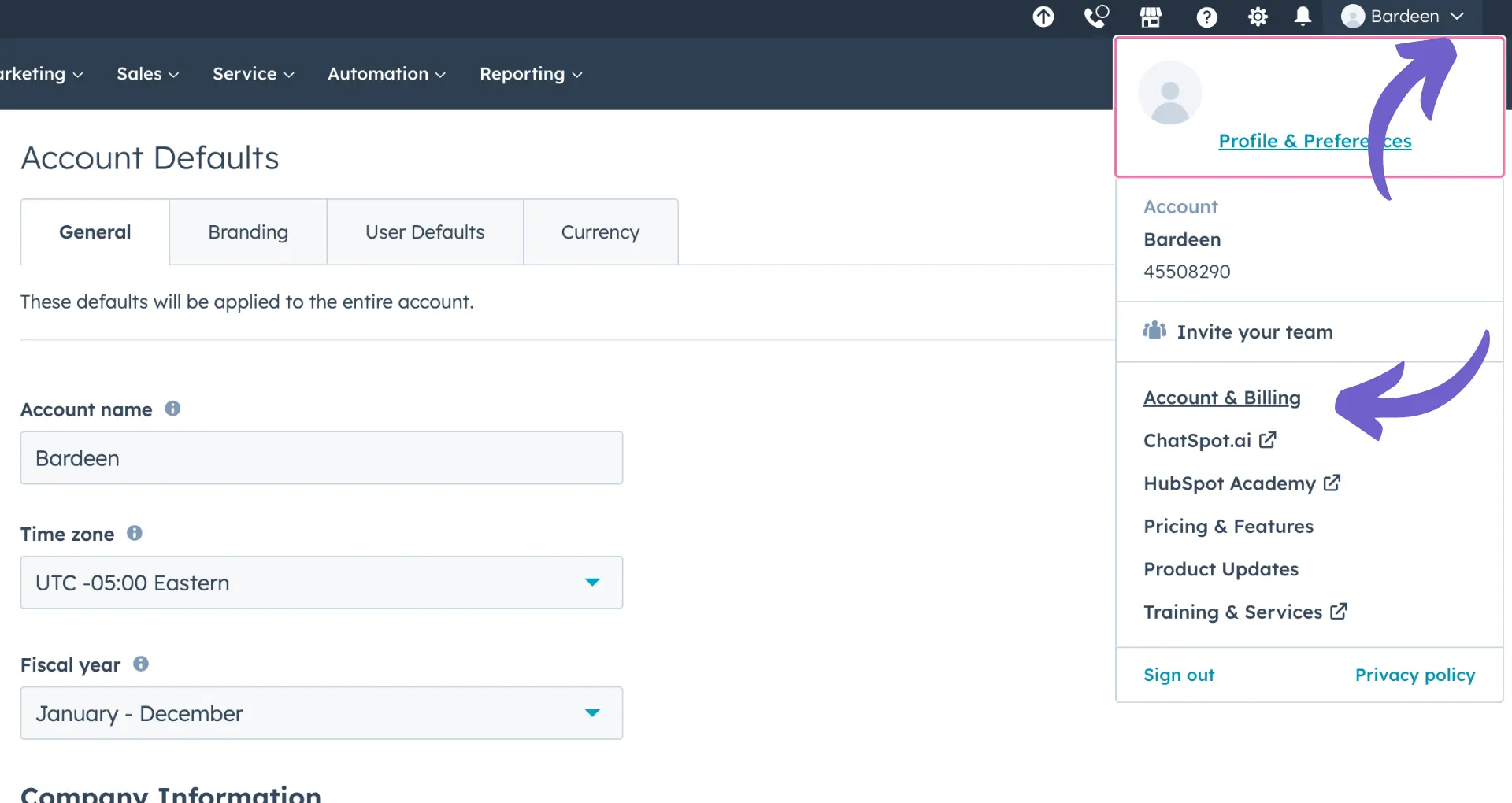





Click Format, Number, then Percent to convert numbers to percentages.
By the way, we're Bardeen, we build a free AI Agent for doing repetitive tasks.
If you're using Google Sheets, you might love Bardeen's AI automation tools. It helps automate tasks like data entry and formatting. Save time and reduce errors.
Converting numbers to percentages is a fundamental skill in data analysis, and Google Sheets provides a powerful tool to streamline this process. Whether you're working on financial analysis, grading students, or evaluating performance metrics, understanding how to convert numbers to percentages in Google Sheets is essential. In this guide, we'll walk you through the simple steps to master this skill and enhance your data analysis capabilities.
A percentage is a way to express a number as a fraction of 100, often denoted using the percent sign (%). Converting numbers to percentages is a crucial skill in data analysis, as it allows you to compare and interpret data more effectively. Here are some scenarios where converting numbers to percentages in Google Sheets can be particularly helpful:
Bardeen can help you gather data from various sources directly into your Google Sheet, saving you time and effort. Try these playbooks to automate data import:
By converting numbers to percentages, you can gain valuable insights from your data and make more informed decisions. Google Sheets provides a simple yet powerful tool to perform these calculations efficiently. To further improve your workflow, consider using GPT for Google Sheets.
Before you start calculating percentages in Google Sheets, it's essential to format your cells properly. Here's how to set up your sheet for smooth percentage calculations:

Proper cell formatting ensures that your percentage calculations are displayed correctly and are easy to read. Another crucial aspect of setting up your sheet is using cell referencing in your formulas. Instead of typing in static numbers, reference the cells containing the values you want to calculate. This approach has several benefits:
By formatting your cells as percentages and using cell referencing in your formulas, you'll be well-prepared to perform efficient and accurate percentage calculations in Google Sheets.
Once your cells are formatted, you can use Bardeen to automate importing data from various sources directly into your Google Sheet. This saves time on manual data entry, allowing you to focus on analyzing the percentage calculations. Try these playbooks to bring data into Google Sheets:
Automate tasks in Google Sheets and save time with Bardeen. Learn how to integrate Google Sheets with other tools.
The fundamental formula for calculating percentages in Google Sheets is (Part/Total) * 100. This formula calculates what percentage a part is of a total. To input this formula in Google Sheets:
Bardeen can help automate tasks that happen before or after your percentage calculations in Google Sheets. For example, you can use these playbooks to qualify leads from various sources and save that data to Google Sheets, setting you up to then calculate conversion percentages or other metrics:
For example, if cell A2 contains the part value and cell B2 contains the total value, the formula would be:
=A2/B2*100

Remember to format the result as a percentage by selecting the cell and clicking Format > Number > Percent in the menu. This basic formula makes it easy to quickly calculate percentages using cell references in Google Sheets. For more advanced tasks, you can connect Google Sheets with Excel using Bardeen.
Once you've calculated key percentages, Bardeen can also help you generate reports from that data to share with stakeholders. Try these playbooks:
In some cases, you may need to calculate percentages based on specific conditions. This is where the IF function in Google Sheets comes in handy. The IF function allows you to create a formula that returns different values based on whether a condition is true or false. When combined with percentage formulas, you can create powerful conditional calculations.
For example, let's say you want to calculate employee bonuses based on their performance rating:
To set up this conditional percentage calculation in Google Sheets:
The final formula would look like this:
=IF(A2>=0.9,0.1,IF(A2>=0.8,0.05,0))

For more advanced uses, you can automate enrichment and qualification tasks in Google Sheets. You can apply similar conditional percentage calculations to various scenarios, such as calculating discounts based on purchase volume or determining grade distributions based on test scores. By combining the power of the IF function with percentage formulas, you can create dynamic, condition-based calculations in Google Sheets.
Bardeen can help you save even more time by automating the process of enriching and qualifying data in Google Sheets. With just a few clicks, you can bring in additional data points and filter rows based on specific criteria. Try these playbooks to streamline your workflow:
Want to save more time? Automate tasks easily with Bardeen. Check out how to enrich LinkedIn profiles in Google Sheets.
Google Sheets offers several built-in functions that can simplify complex percentage calculations, especially when working with large datasets. These functions automate the process and save time by eliminating the need for manual calculations.
Some useful functions for percentage operations include:
Bardeen can further automate percentage-related tasks in Google Sheets, saving you even more time from manual calculations. Try these playbooks to enrich your existing data with new percentage metrics:
To use these functions, simply input the range of cells containing your data and the value or percentile you want to calculate. For example, to find the 75th percentile of values in cells A1:A100, you would use the formula:
=PERCENTILE(A1:A100, 0.75)
These functions can be particularly helpful when analyzing large datasets, such as sales figures or survey responses. By utilizing them, you can quickly identify key percentiles, ranks, and trends without the need for time-consuming manual calculations.
Combining these functions with other Google Sheets formulas and tools, such as conditional formatting or pivot tables, can further enhance your ability to analyze and visualize percentage-based data effectively. Additionally, using AI tools in Google Sheets can automate many of these tasks.
Bardeen can automatically add new percentage columns to your Google Sheets based on existing data, such as qualifying leads as a percentage based on certain criteria from emails or other sources. This saves you time while still leveraging the power of percentages to analyze your data.

To ensure your percentage calculations in Google Sheets are accurate, there are a few best practices to keep in mind:
Some common pitfalls to avoid when performing percentage calculations include:
By keeping these tips in mind and being vigilant about avoiding common mistakes, you can ensure that your percentage calculations in Google Sheets are accurate, reliable, and easy to maintain over time. For more efficiency, learn how to connect Google Docs with Google Sheets.
Save time and avoid errors by using Bardeen's web scraping tool to automate data extraction and integration with Google Sheets.










SOC 2 Type II, GDPR and CASA Tier 2 and 3 certified — so you can automate with confidence at any scale.
Bardeen is an automation and workflow platform designed to help GTM teams eliminate manual tasks and streamline processes. It connects and integrates with your favorite tools, enabling you to automate repetitive workflows, manage data across systems, and enhance collaboration.
Bardeen acts as a bridge to enhance and automate workflows. It can reduce your reliance on tools focused on data entry and CRM updating, lead generation and outreach, reporting and analytics, and communication and follow-ups.
Bardeen is ideal for GTM teams across various roles including Sales (SDRs, AEs), Customer Success (CSMs), Revenue Operations, Sales Engineering, and Sales Leadership.
Bardeen integrates broadly with CRMs, communication platforms, lead generation tools, project and task management tools, and customer success tools. These integrations connect workflows and ensure data flows smoothly across systems.
Bardeen supports a wide variety of use cases across different teams, such as:
Sales: Automating lead discovery, enrichment and outreach sequences. Tracking account activity and nurturing target accounts.
Customer Success: Preparing for customer meetings, analyzing engagement metrics, and managing renewals.
Revenue Operations: Monitoring lead status, ensuring data accuracy, and generating detailed activity summaries.
Sales Leadership: Creating competitive analysis reports, monitoring pipeline health, and generating daily/weekly team performance summaries.